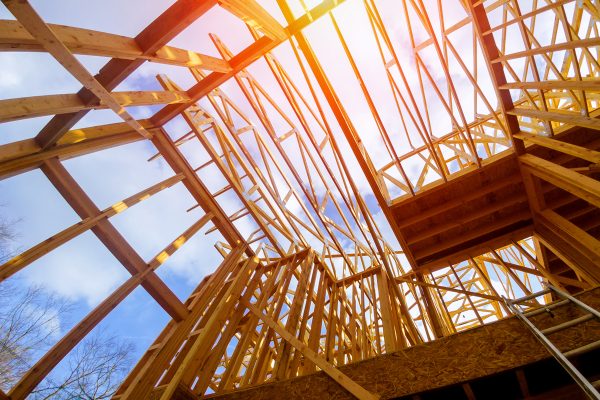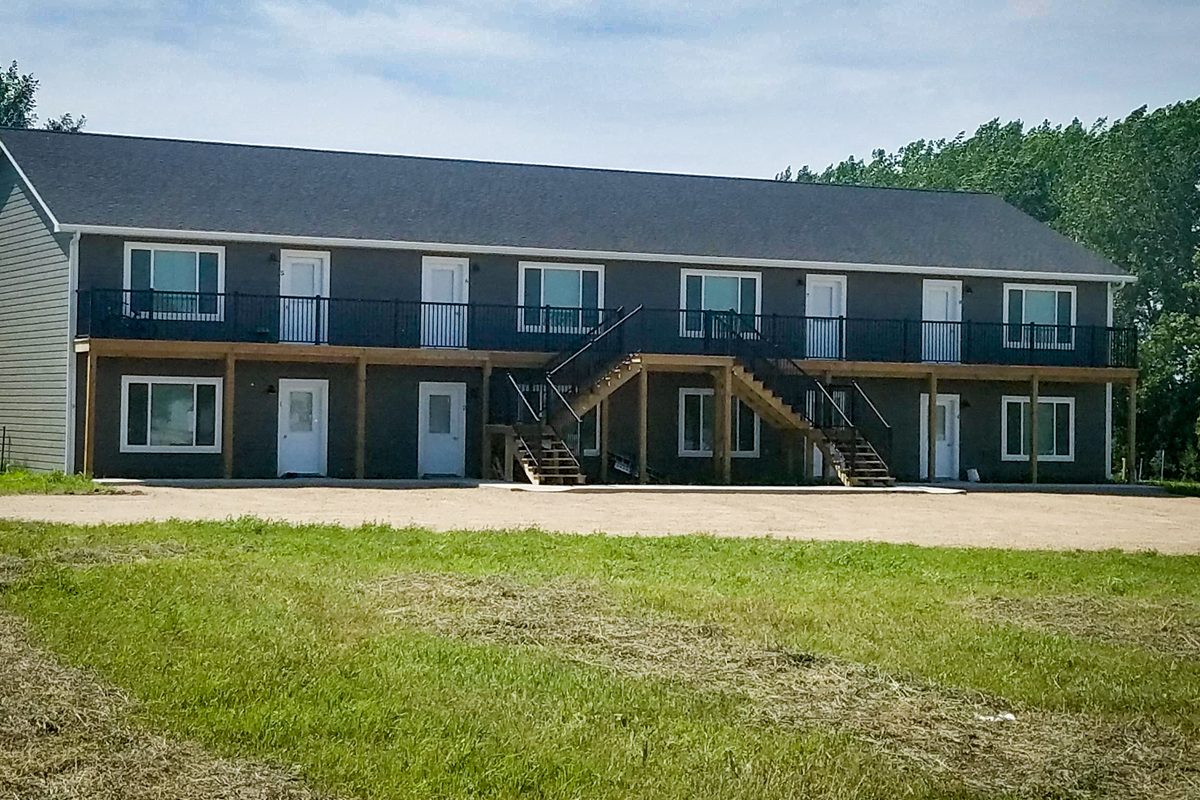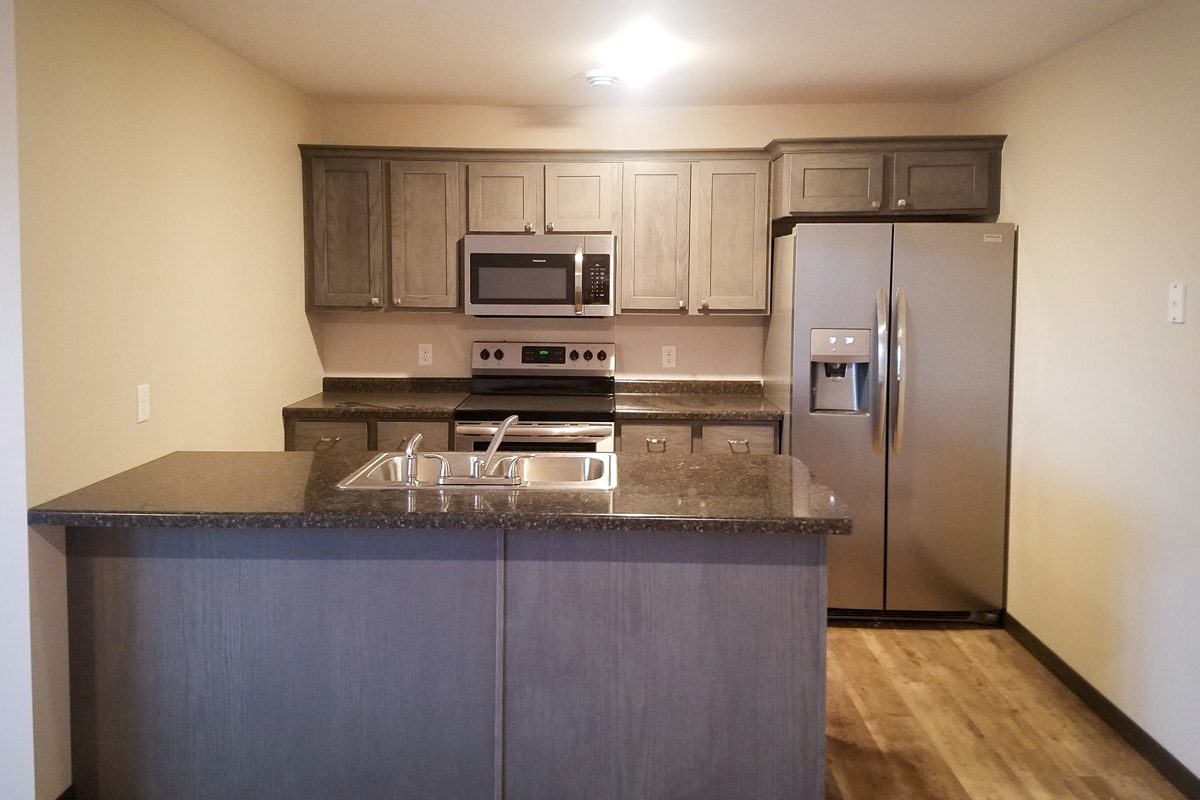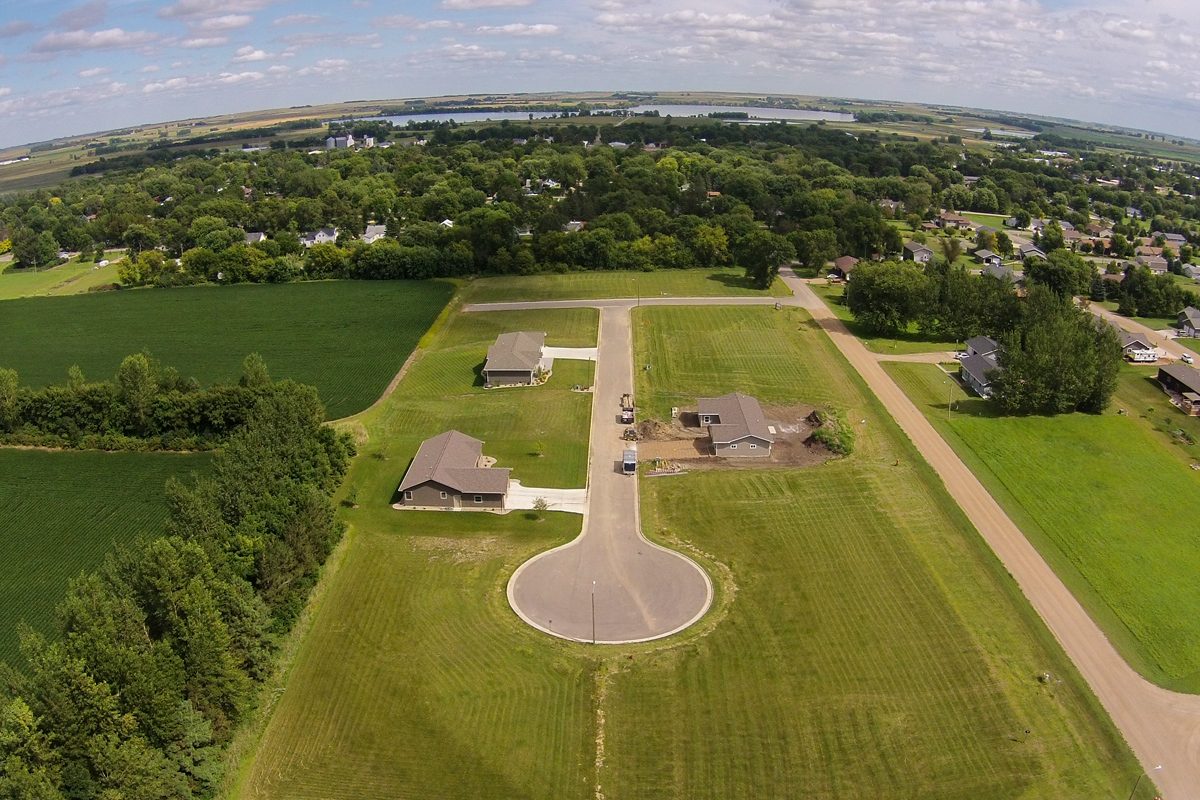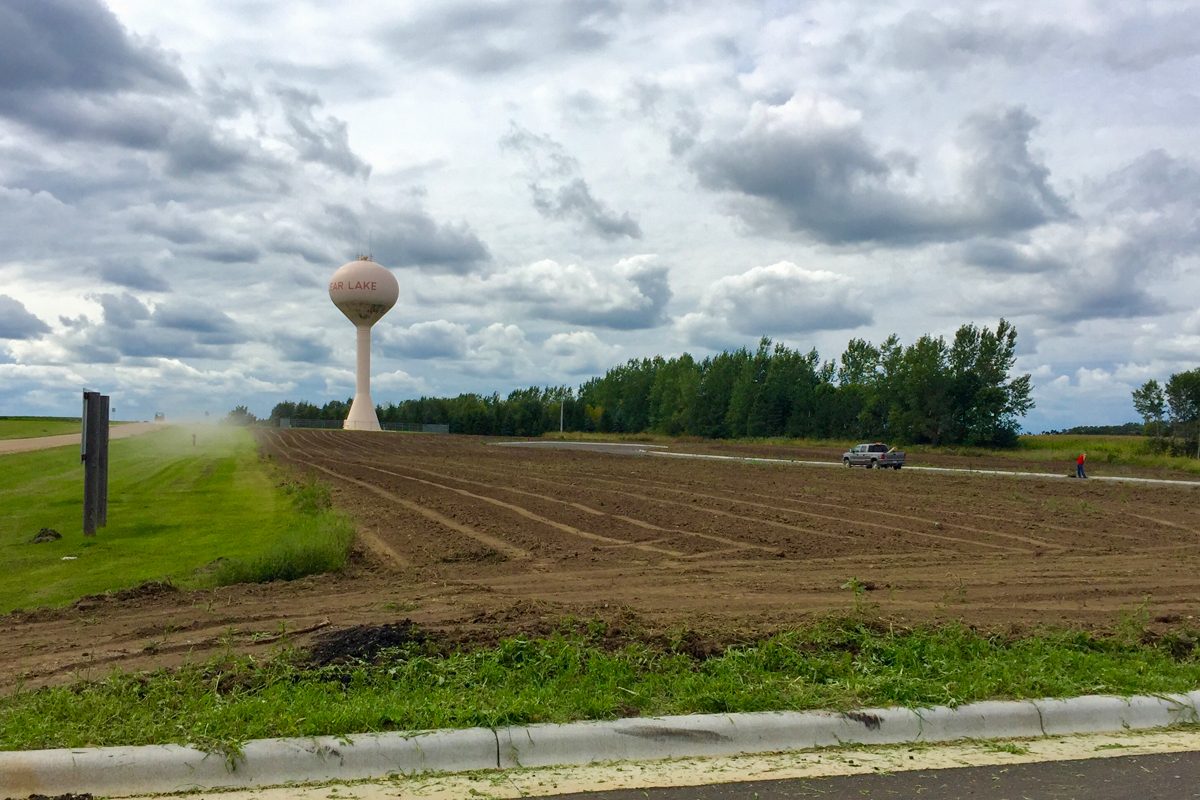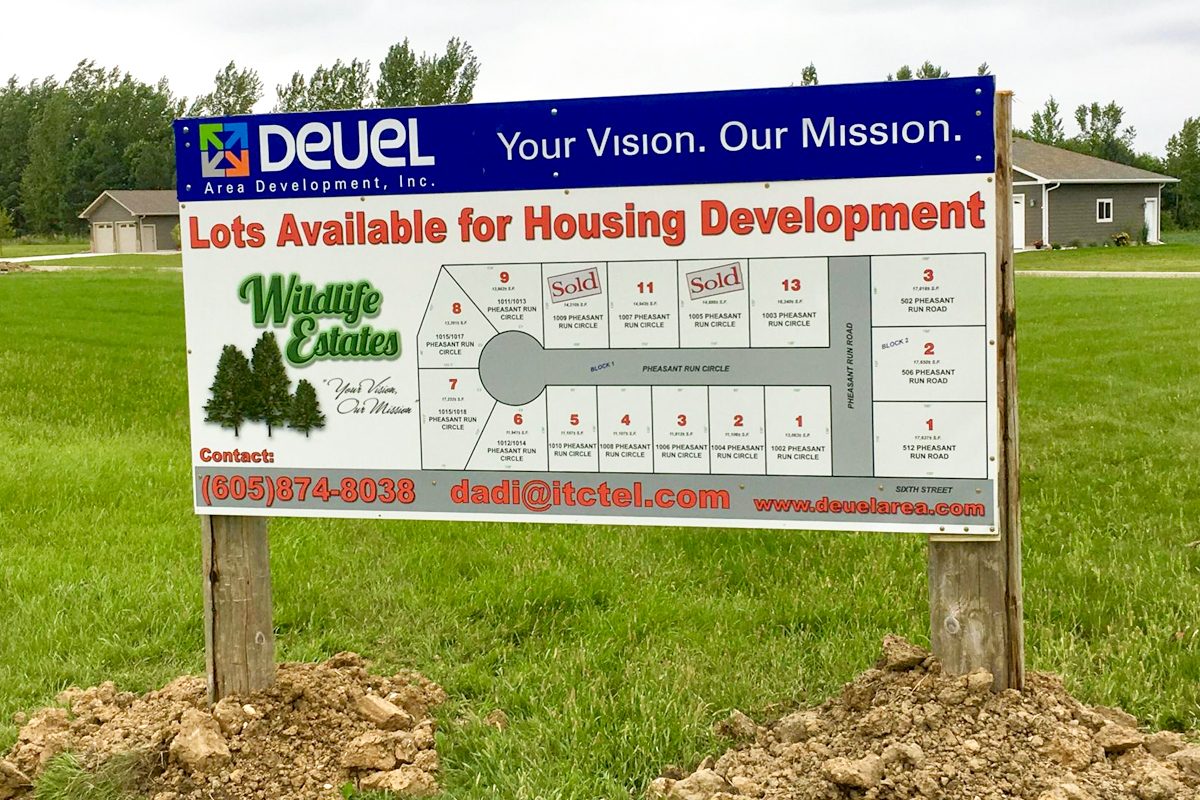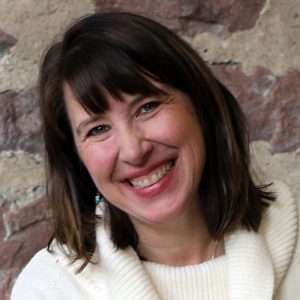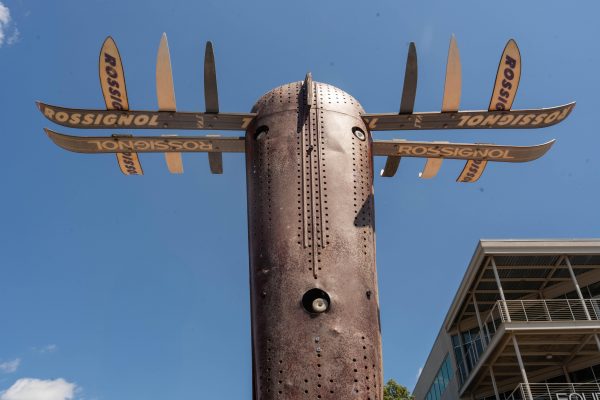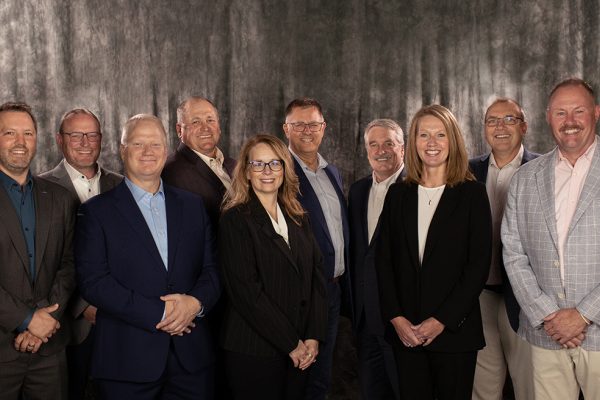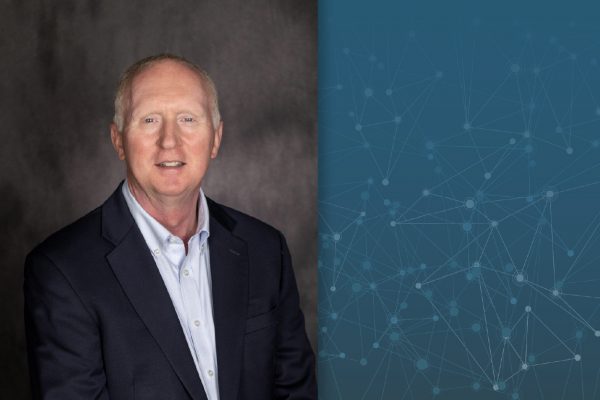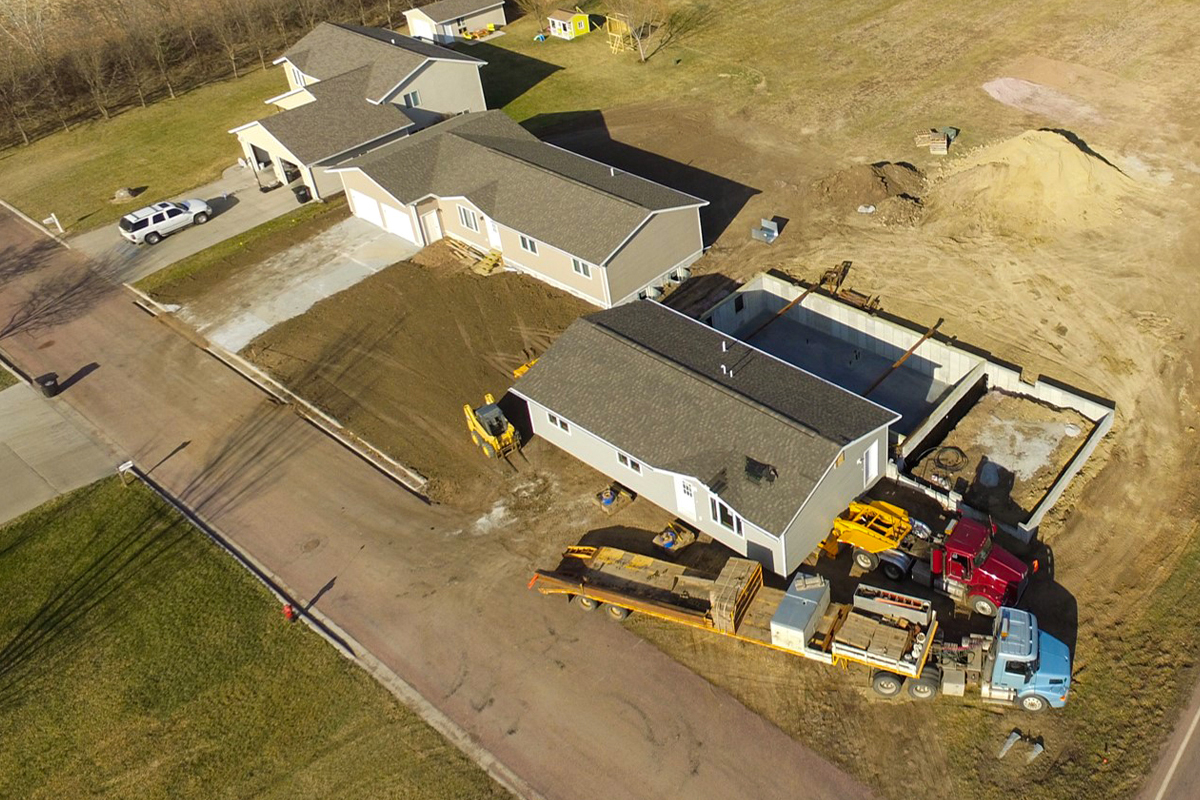
Building seven new houses is helping turn around a population decline in Mount Vernon.
Located about 15 miles from Mitchell, the community is perhaps best known as the hometown of former NFL linebacker Chad Greenway. But the notoriety hasn’t been enough to keep the population from declining, and a lack of housing kept it from growing. Community members worried they were facing school closure, losing businesses and even more residents.
So, they took action and coordinated a campaign to bring home alumni, invested volunteers and financial assistance from the Rural Electric Economic Development (REED) Fund.
“Mount Vernon has its own school district and we’re really proud of it. There are great students and a great administration. But we were getting smaller and smaller and definitely wanted to do something to boost our enrollment,” said resident Dave Anderson. “We’re well aware that if a school closes, it’s hard on a community and that was kind of the catalyst for all this.”
Anderson is a member of the Mount Vernon City Council and the President of the Mount Vernon Economic Development Group (MVEDG). He estimates the work the economic development group is doing has brought nearly $1 million to the city’s tax base over the past five years.
The group initially focused on increasing affordable housing and encouraging people to move back to town. The new homes filled in vacant lots or replaced aging homes, helping to beautify the community, Anderson said. Five were built through handshake agreements with contractors and two were done on spec and financed through the REED Fund.
The REED Fund, a non-profit organization established in 1996, is governed by electric cooperatives serving eastern South Dakota and western Minnesota. The East River Electric Cooperative in Madison administers the fund to support private and non-profit developers to create multi-family housing and single-family homes.
“We needed the capital to pay the bills for the last two houses. REED was a great tool – it allowed us to keep the houses affordable,” Anderson said.
Feedback from the community has been positive.
“Everybody knows that the town needs young families moving in but it’s hard to do that,” he said. “So, everybody has been thrilled that we’ve had success.”
Removing aging housing stock, improving existing homes and constructing new homes and rental housing makes communities more attractive to new families, said Linda Salmonson, Economic Development Manager with East River Electric Cooperative.
The REED Fund has loaned more than $100 million to hundreds of projects over the past 25 years. In 2019, the Fund launched an initiative with a multi-year goal of raising $10 million in outside investments to specifically promote housing development. Last year, SDN Communications and its member companies pledged $1 million to the initiative. Other partners include Avera Health and First Bank & Trust.
The lack of housing is an economic challenge for communities of all sizes but can especially impact smaller communities. They’re the same communities that are the customer base for SDN’s member companies, the independent broadband providers across South Dakota.
“For years, we’ve looked at the housing problem in our member company territories. People might be surprised to know there’s a demand for housing in places such as Parkston, Hayti or Kennebec,” said Mark Shlanta, CEO of SDN Communications.
REED and its member cooperatives’ financing activities have demonstrated that small is not a limiting factor in creating vibrant communities. Some of its best success stories come from small businesses and small communities that have found innovative ways to thrive, make a living, retain and create jobs, stabilize and grow their populations, and provide vital community facilities and services, Salmonson said.
Lake Norden
In Lake Norden, developer Casey Witt knew there was a demand for housing. After Agropur announced plans to expand its cheese production facility in the community, Witt said the need became even greater.
His local bank directed him to the REED Fund. He also took advantage of funds available through Grow South Dakota, a non-profit also working to advance housing and economic development, to build Prairie Properties in Lake Norden.
The first of two multi-family housing complexes went up in the fall of 2017 followed by another in 2018. Both complexes filled quickly, Witt said, and there is room on the same site for a third building. Together, the two buildings include 16 two-bedroom units and two three-bedroom units, which turned out to be the most desirable, he said. Several Agropur employees have made their homes there, as well as young families.
Other investors in Lake Norden are now also building duplexes and fourplexes, Witt said.
“The property did fill a need — all of these small towns have a continual need for housing and the need is still there,” he said.
Clear Lake
Clear Lake is a third example. Located between Brookings and Watertown, the community has several major businesses, a hospital, clinic, nursing home, and school district. It’s not a bedroom community, but Joan Sacrison with the Deuel Area Development, Inc. (DADi) says the lack of available housing was stifling future development.
“We knew we had to start developing now or things could get worse,” Sacrison said. “With other businesses in town, it is pertinent that we can keep them here. We want people to live in Clear Lake.”
DADi tackled Clear Lake’s housing challenge because a planned housing development had land available. The East Central Development Company (ECDC) postponed its project in 2009 due to the economy and two years later, merged with DADi. In 2015, the development group broke ground on 16 lots in the Wildlife Estates thanks to a grant, a Rural Economic Development, Inc. (REDI) loan from Interstate Telecommunications Cooperative, Inc. (ITC), and the REED Fund.
The infrastructure at the development – platting, utilities, curb and gutter, broadband – is in place and lot prices are locked in, Sacrison said. Covenants are flexible enough to accommodate different housing needs, whether that’s family homes, twin homes or single level homes geared toward retirees. DADi’s goal is to sell at least one lot per year. The community will do another housing study to help outline what’s next for the community’s housing needs.
The development corporation hoped investing in additional housing would spur a building process — which is exactly what happened. DADi also used local businesses to build the development, which helped create jobs for the area and established more housing options for current and future residents.
“They are the ones who will shop local and support local,” Sacrison said. “Clear Lake has a lot of potential for people who want to live rural.”
For communities such as Mount Vernon, Lake Norden and Clear Lake, expanding housing options keeps people in those communities, adds to the tax base and supports the workforce. And that’s exactly the result the REED Fund and its investors want to ensure.
For communities such as Mount Vernon, Lake Norden and Clear Lake, expanding housing options keeps people in those communities, adds to the tax base and supports the workforce. For investors like SDN, the true return is the benefit to communities that are important to the ongoing economic development of the region.
“Return comes in the ability to engage with communities, businesses and development corporations by bringing a valuable development resource — access to capital —that communities need and want,” Salmonson said.
And when someone moves to a town, Salmonson says they become more engaged in community activities and are more likely to stay there to raise a family, purchase goods and services, pay taxes and support the local school. That’s exactly the result the REED Fund and its investors are after.
SDN is a leader in providing business internet, private networking and cloud connectivity to businesses and organizations in communities such as Sioux Falls, Rapid City, Worthington, and the surrounding areas.
